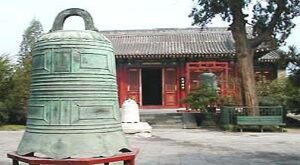The month of October brings with it a swirl of leaves, a hint of chill in the air, and a sense of the mystical that seems to awaken our primal instincts. Halloween, Samhain, and the Day of the Dead are three cultural celebrations that dance on the edge of the unseen, connecting us with our ancestors and the ancient rituals that once stirred the earth’s energies.
Halloween: A Carnival of Energies
The Pumpkin Power: Halloween, the modern-day incarnation of ancient traditions, is a carnival of energies. We carve pumpkins into jack-o’-lanterns, a symbol that has deep esoteric roots. The flickering candle inside is believed to ward off evil spirits, providing protection for the living.
Costumes and Disguises: Dressing up in costumes is more than just fun – it’s a way to tap into our collective unconscious. In Celtic traditions, it was believed that during Samhain, the boundary between the living and the dead was thin. People wore masks to confuse malevolent spirits and connect with the mystical.
Trick-or-Treating: The act of trick-or-treating can be traced back to an old Celtic practice where people would leave out food for the wandering spirits. It’s said that this act was not only a way to honor the dead but also to share the energies of the harvest season.
Samhain: Where Ancient Rituals and Energies Intersect
Celtic Connection: Samhain, pronounced “sow-in,” is a significant influence on modern Halloween. It marked the end of the harvest season and the beginning of winter. During this time, the Celts believed that the veil between the living and the dead was thin, allowing for communion with ancestors.
Bonfires and Earth Energies: Bonfires were a central part of Samhain celebrations. These fires were believed to purify and protect against malevolent spirits. The energies of the fire were used to cleanse and renew the land for the coming year.
The Cosmic Transition
At its core, Samhain was the Celtic New Year, a cosmic juncture where the old year came to a close, and the new year was born. This transition was not only marked by the changing of seasons but also by the belief that the veil separating the earthly realm from the spirit world grew thin. It was a time when the forces of nature, both seen and unseen, danced in unison.
Harvest and Sacrifice
Samhain was inextricably linked to the harvest season, a time of great bounty and gratitude. Yet, it was also a time of sacrifice. The Celts believed that the blood of sacrificial animals would appease the gods and protect the community throughout the harsh winter months. This act was not just about the practicality of food but about the spiritual renewal of the land.
Costumes and Camouflage
The Celts donned costumes and masks during Samhain to blend in with the wandering spirits that roamed the Earth during this liminal period. This practice not only allowed them to elude malevolent entities but also to connect with their ancestors and the spiritual realm. Disguises were not mere clothing; they were a transformative bridge to the otherworld.
Bonfires and the Hearth’s Heartbeat
Bonfires, the heart of Samhain celebrations, radiated energy. They symbolized protection, purification, and renewal. People would light these fires to ward off evil and to illuminate their path through the darkness of winter. The energy of the flames was thought to cleanse the land and bring light to the souls of the departed.
Honoring Ancestors
The concept of the thin veil was central to Samhain. It was believed that deceased loved ones could return to the mortal realm during this time. Families set places at their tables for these spirits, and food and drink were left out as offerings. Ancestor altars were created, adorned with photographs and mementos, serving as a bridge to the other side, where the living and the dead communed.
Day of the Dead: A Vibrant Celebration of Energies
Aztec Origins: The Mexican holiday, Dia de los Muertos (Day of the Dead), blends indigenous Mesoamerican traditions with Spanish Catholic influence. Its roots trace back to Aztec festivals honoring the goddess Mictecacihuatl, the Lady of the Dead.
Altars and Offerings: Ofrendas, the colorful altars created during Day of the Dead, are like beacons of energy. They’re adorned with marigolds, sugar skulls, and the favorite foods of the deceased. These offerings are believed to attract and nourish the spirits.
Cemeteries and Vibrations: Families visit cemeteries to clean and decorate the graves of their loved ones. The act of cleaning the tombstones and creating a welcoming atmosphere is believed to maintain a connection with the spiritual realm.
The Eternal Connection
These celebrations, Halloween, Samhain, and the Day of the Dead, all tap into the ancient energies that connect us with our past, our ancestors, and the cycles of life and death. Whether it’s carving pumpkins, lighting bonfires, or crafting ofrendas, these traditions are more than just superficial rituals. They are gateways to the mystical, connecting us with our shared human history and the esoteric forces that continue to shape our lives. So this October 31st -November 2nd , as you embrace these traditions, remember the energies that flow through them, connecting you to something deeper and more ancient than you may realize.



